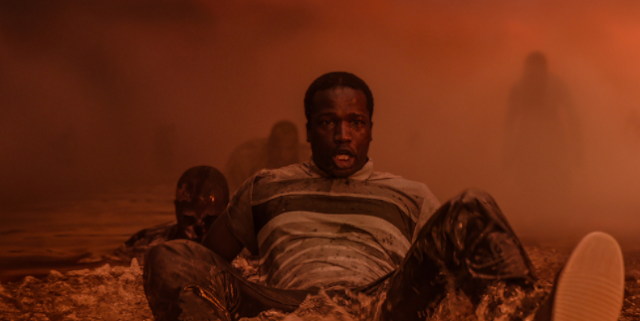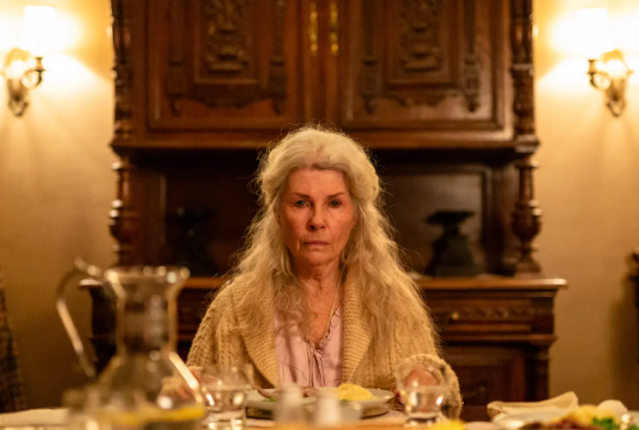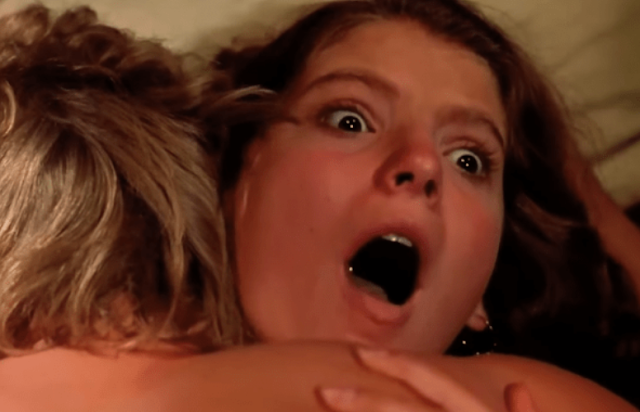Relic, His House and a trend for emotional logic in horror films
Two of 2020's most talked about horror releases - generational dementia tale Relic and Netflix's haunted house refugee drama His House - don't really care about making literal sense. Instead of having metaphor as subtext, it becomes the only logical way of understanding the two movies.
Warning: This piece contains spoilers for both Relic and His House
Metaphorical layers in horror movies are nothing new, but viewers usually have the option of reading the film at face value.
The Entity in It Follows is an otherwordly monster first, a representation of sexual anxieties and an adolescent fear of mortality second. Hereditary may be focused on a family tearing itself apart for the majority of its runtime, but in the third act Paimon and his cult hold centre stage.
Not so with Relic and His House, which in their final acts dive head first into dreamlike territory which foregrounds thematic and emotional currents over plot.
In Relic, this happens around the time Sam (Bella Heathcote) discovers a surreal, decaying mirror image of her grandma's home inside one of her closets - which comes across as an unanticipated Lynchian left turn when watching the movie.
On a narrative level this moment is significant because we finally discover where Edna (Robyn Nevin) has been when she disappeared at the start of the film - inside the walls of the house, responsible for the scratching noises Sam and Kaye (Emily Mortimer) have been hearing.
Yet on a more significant emotional level, Sam has in fact entered Edna's decaying mind as she succumbs to dementia - with walls so low they threaten to crush her and passages that seal themselves off when she turns her back.
The reasoning behind the supernatural happenings in the film is very lightly sketched - after Kaye's great-grandfather died alone and abandoned by his family, some form of vengeful curse was passed on when a stained glass window was moved from his dismantled home to Edna's house.
This does not really explain Edna's skin-peeling transformation into a wizened demon baby at the film's climax, mainly because any attempt to narratively explain what's happening is jettisoned after the first 60 minutes have passed.
What happens to Edna is primarily an expressionist representation of what it feels like to lose a loved one to dementia interpreted through the genre expectations of a horror film. Hence why trying to explain the film's third act on the level of plot is kind of missing the point.
His House follows a similar tack. The marketing of the film sold the premise as a haunted house the protagonists can't leave as they're on probation as asylum seekers, but this turns out to be a way off what's actually going on.
We soon learn the haunting has nothing to do with the house, but is a curse Bol (Sope Dirisu) and Rial (Wunmi Mosaku) have carried with them from South Sudan to punish them for their desperate actions during the civil war.
Instead of housebound spectres, we learn a witch (Javier Botet, who was also Tristana Medeiros in the [Rec] series, trivia fans) has decided to punish the couple for 'stealing' their lives from those not so fortunate.
We learn that in order to make it onto a bus and avoid certain death, Bol stole someone else's child to claim as his own so the driver would let him onboard. The child later died when crossing the sea to the UK.
Significantly, we learn the witch can't harm the couple directly, but instead plays on the pair's survivor's guilt to manipulate them into harming themselves and each other. It's at this point the witch becomes more important as an embodiment of PTSD and the dehumanising effects of war rather than a literal supernatural entity.
The fact Rial ends the haunting simply by slitting the witch's throat would be underwhelming if the witch primarily functioned as an external threat. But the action is hugely significant on an emotional and metaphorical level. It represents Rial realising they do deserve the lives they have, and vowing to move forwards past the trauma of their displacement.
Both films' endings are satisfying because they tie up the movies' thematic and emotional threads. While you could say a film like Hereditary has a somewhat jarring transition from family drama to tropey religious horror, the moments when His House and Relic quietly set narrative aside to foreground the characters' internal turmoil are in some ways more satisfying.
They're more reminiscent of 2014's The Babadook, a film with an unexpected conclusion which had something resonant to say about living with depression.
With two critically lauded 2020 horrors prioritising emotional logic over more conventional narrative, the floodgates may well open for more of the same - although whether it will be as well-executed as these two films remains to be seen.








Comments
Post a Comment